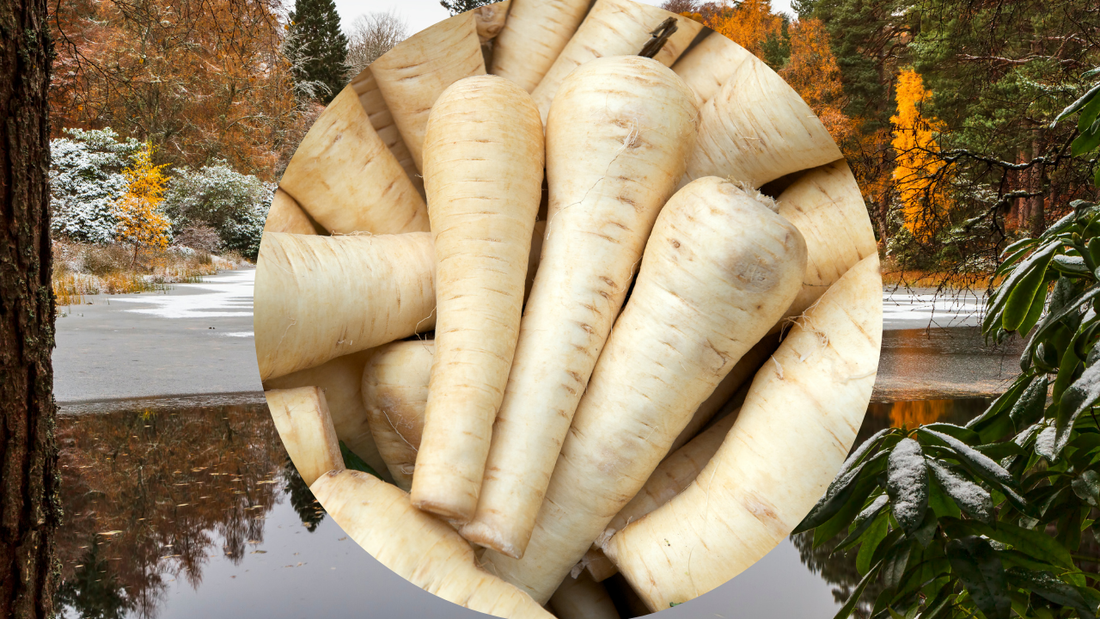
What season are Parsnips grown in?
Share
Parsnips: When Are They in Season and Why They Shine in Winter? 🌱🥕
Parsnips may not steal the show like some other vegetables, but they’re a quintesential winter crop with a sweet, nutty flavor and impressive versatility in the kitchen. For centuries, these pale root vegetables have been a dietary staple, valued for their ability to thrive in cold climates and their long shelf life. Let’s explore what season parsnips are grown in, when they’re at their best, and why they’re such an important winter vegetable.
What season are parsnips grown in? Primarily spring, but they’re left in the ground until late fall or winter.
When are parsnips in season? Late fall through winter, especially November to February, when frost enhances their sweetness.
What Season Are Parsnips Grown In? 🌍
Parsnips are a cool-season crop that thrive in temperate regions with consistent, cooler temperatures. These hardy root vegetables are typically
- Planted in Spring: Parsnip seeds are sown as soon as the ground is workable, often in late March or April. They need a cool growing season to develop properly and take approximately 4-5 months to mature.
- Harvested in Late Fall or Winter: While parsnips can technically be harvested in late summer, they reach the peak sweetness after being exposed to frost. The first frost triggers a natural process where the starches in the root convert to sugar, enhancing their flavor.
Key Growing Regions:
Parsnips are primarily grown in Northern Europe, Canada, and the United States, especially in regions with a frost season. Countries like the UK, Scandinavia, and parts of eastern Europe feature parsnips as a staple in traditional winter dishes due to their ideal growing conditions.
Parsnips in Season: Winter’s Unsung Hero ❄️
When thinking about parsnips in season, the winter months(November through February)are when these vegetables truly shine. This is why parsnips are often referred to as a "winter vegetable."
- Seasonal Sweetness: Frost enhances the natural sugar in parsnips, giving them a richer, sweeter flavor that’s ideal for winter dishes. This makes parsnips a favorite for roasted side dishes, hearty stews, and creamy soups
- Traditional Winter Diets: In regions like Scandinavia and the UK, parsnips have been a vital part of winter diets for centuries Their ability to withstand cold weather while maintaining their flavor made them indispensable in times before refrigeration.
Why Parsnips Long Shelf Life Extends Season ⏳
One of the most remarkable things about parsnips is their long shelf life, which has made them a staple in agriculture for generations. After harvesting in late fall, parsnips can be stored for 4-6 months under proper conditions:
- Optimal Storage Conditions: Keep parsnips in a cool, dark, and humid environment, such as a root cellar or in the crisper drawer of your fridge. Perforated bags are ideal for maintaining freshness without trapping excess moisture
- Sustainability: The ability to store parsnipsfor extended periods reduces food waste and makes them a sustainable choice for eating seasonally.
Historically, this longevity ensured families had accessto nutritious food throughout the harsh winter months, long before modern preservation methods.
The Importance of Seasonal Parsnips
Eating seasonal produce like parsnips helps us stay connected to nature’s rhythms and supports sustainable farming practices. Parsnips are a perfect example of a crop that thrives in harmony with the colder months, delivering:
- Nutritional Value: Parsnips are rich in vitamins C and K, fiber, and antioxidants, making them a healthy addition to winter meals.
- Versatility: From roasted parsnip fries to creamy soups, their natural sweetness makes them a culinary favorite
- Cultural Legacy: For centuries, parsnips have been celebrated as a resilient, reliable winter food that connects us to our agricultural roots.
When Are Parsnips in Season? A Recap
To summarize:
- What season are parsnips grown in? Primarily spring, but they’re left in the ground until late fall or winter.
- When are parsnips in season? Late fall through winter, especially November to February, when frost enhances their sweetness.
Whether you’re enjoying roasted parsnips alongside a Sunday roast or adding them to a comforting winter stew, these vegetables are the perfect example of how seasonal eating can nourish both body and soul.
